
num. 7-12 dicembre 2007
 |
page 053 |
page 055 |
 |
|
Flexopecten glaber (Linnaeus, 1785) Conchiglie medie.Click su ciascuna immagine per vederla ingrandita. |
Average shells. Click on each pic to load a larger view |
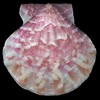 |
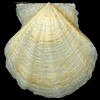 |
 |
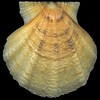 |
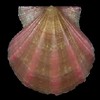 |
|||||
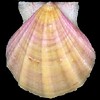 |
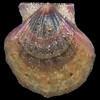 |
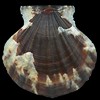 |
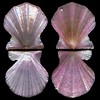 |
|
Le costole sono piatte su ambo le valve. Si osserverà la loro scarsa quantità: generalmente sono da cinque a sette sulla valva sinistra, come si può vedere nelle conchiglie 4, 5 e 6. Siamo lontani dalle dieci menzionate in letteratura. Se pensate che il numero di costole era una buona caratteristica distintiva, 5 per flexuosus e circa 10 per glaber; ci si perde poi, appena si guarda qualcuna delle nove conchiglie qui raffigurate, specialmente quellie nelle quali manca la forma tipica del glaber. Qualcosa di speciale che non appare in flexuosus è l'ordine di striature radiali che coprono l'intera valva, costole incluse. E i margini non sono crenulati, ma tutte le conchiglie mostrano un gruppo più o meno visibile di linee concentriche, qualche volta meno linee di crescita che scalini piatti. Questi scalini sono evidenti nelle conchiglie 2 e 4, mentre le linee di crescita sono meglio visibili nella conchiglia 8 ed anche nel giovane 9. Riguardo all'incavo auricolare, non è evidentemente pronunciato come in flexuosus, forse per due ragioni. O, o.... O che l'orecchietta anteriore non è striata, piegata e scalata come in flexuosus, o che l'incavo stesso è striata come nelle conchiglie 2, 8 ecc. Caratteri estrni distintivi Flexopecten flexuosus: Costole generalmente forti, liscie, separate da solchi profondi striati radialmente che qualche volta portano una costola secondaria. Può apparire una crenulazione sui margini. L'orecchietta anteriore simile a quella di Mimachlamys varia, con incavo ben definito ed incisione bissale. Flexopecten glaber: Costole spianate. L'intera valva è striata radialmente e coperta da un ordine concentrico di linee di crescita o scalini. Nessuna costola secondaria, nessuna crenulazione sui margini. L'orecchietta anteriore simile a quellia di Aequipecten opercularis. Solco e incisione bissale meno pronunciati. altre caratteristiche ? Perché no? Tentiamo di scoprirne alcune nella prossima pagina. |
The ribs are flat on both valves. You will notice their poor quantity: generally they are five to seven on the left valve, as you can see in shells 4, 5 and 6. We are far from the ten mentionned in litterature. If you thought that the comparison of rib-numbers was a good distinctive feature, 5 for flexuosus and around 10 for glaber, then you will be lost as soon as you will receive some of these nine shells pictured here, especially those which lack the typical glaber pattern. Something special which didn't appear in flexuosus is the array of radial striations which cover the whole valve, ribs included. And the margins are not crenulated, but all the shells show a less or more visible group of concentric lines, sometimes less growth lines than flat scales. These scales are obvious in shells 2 and 4, while the growth lines are better seen in shell 8 and even in the young 9th. Regarding the auricular trench, it is not as obviously pronounced as in flexuosus, maybe for two reasons. Aut, aut... Aut the anterior auricle is not as striated, folded and scaled as in flexuosus, aut the trench itself is striated, as in shells 2, 8 etc. external distinctive features Flexopecten flexuosus: Ribs generally strong, smooth, separated by deep furrows radially striated which sometimes bear a secondary rib. Crenulations can appear on the margins. The anterior auricle looks like those of Mimachlamys varia, with well defined trench and byssal notch. Flexopecten glaber: Ribs flat. The whole valve is radially striated and covered by a concentric array of growth lines or scales. No secondary ribs, no crenulations on margins. The anterior auricle looks like those of Aequipecten opercularis. Trench and byssal notch less pronounced more features ? Why not ? Let's try to discover some on next page. |
